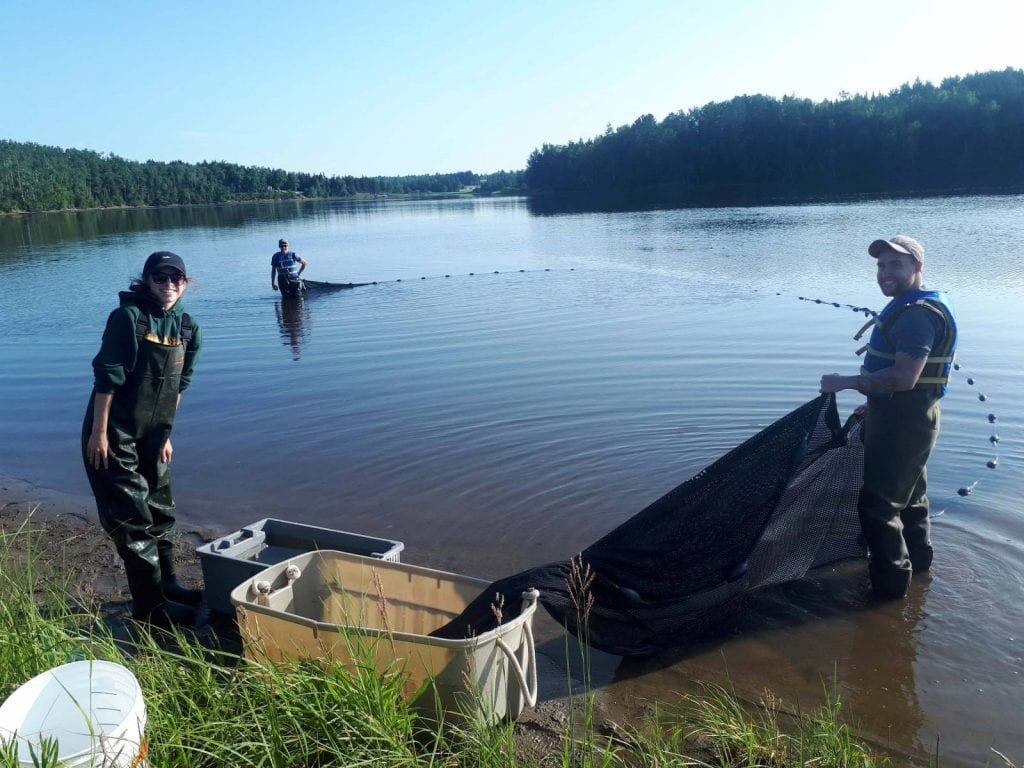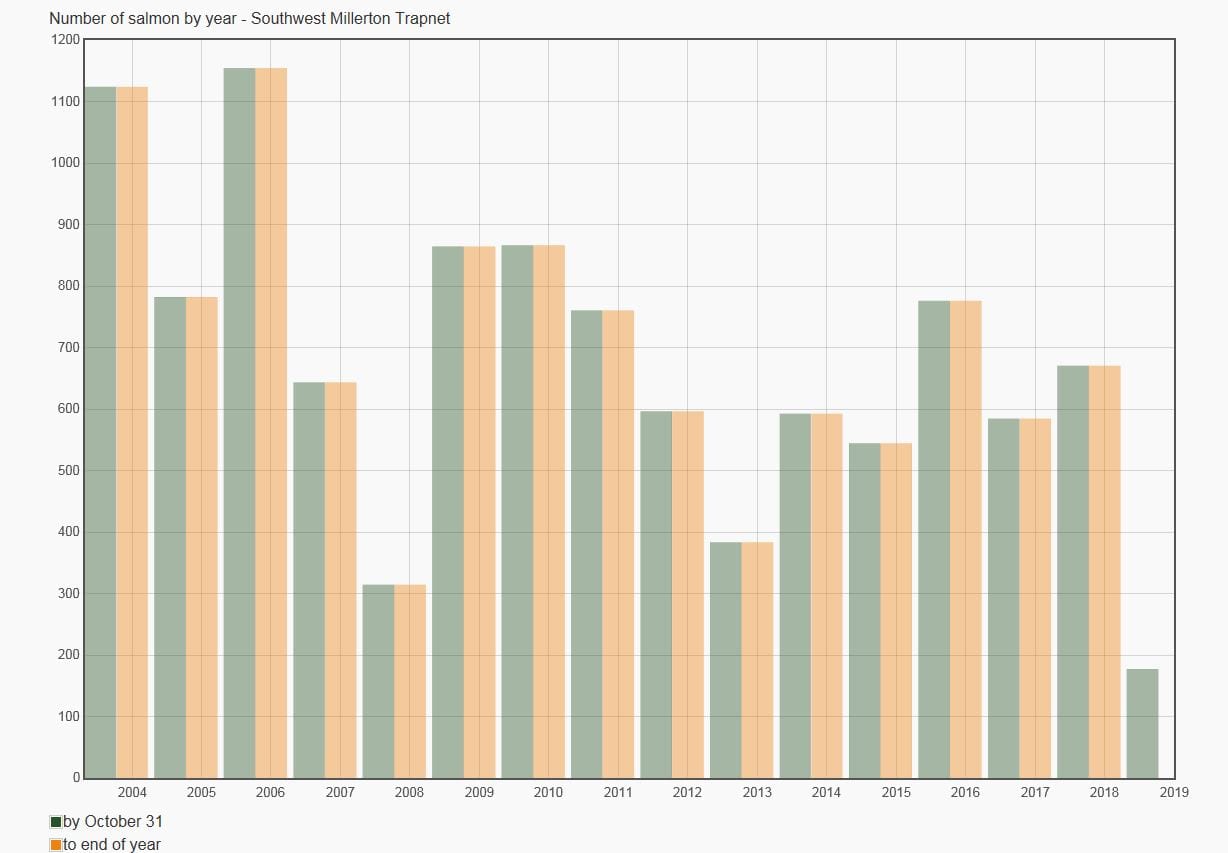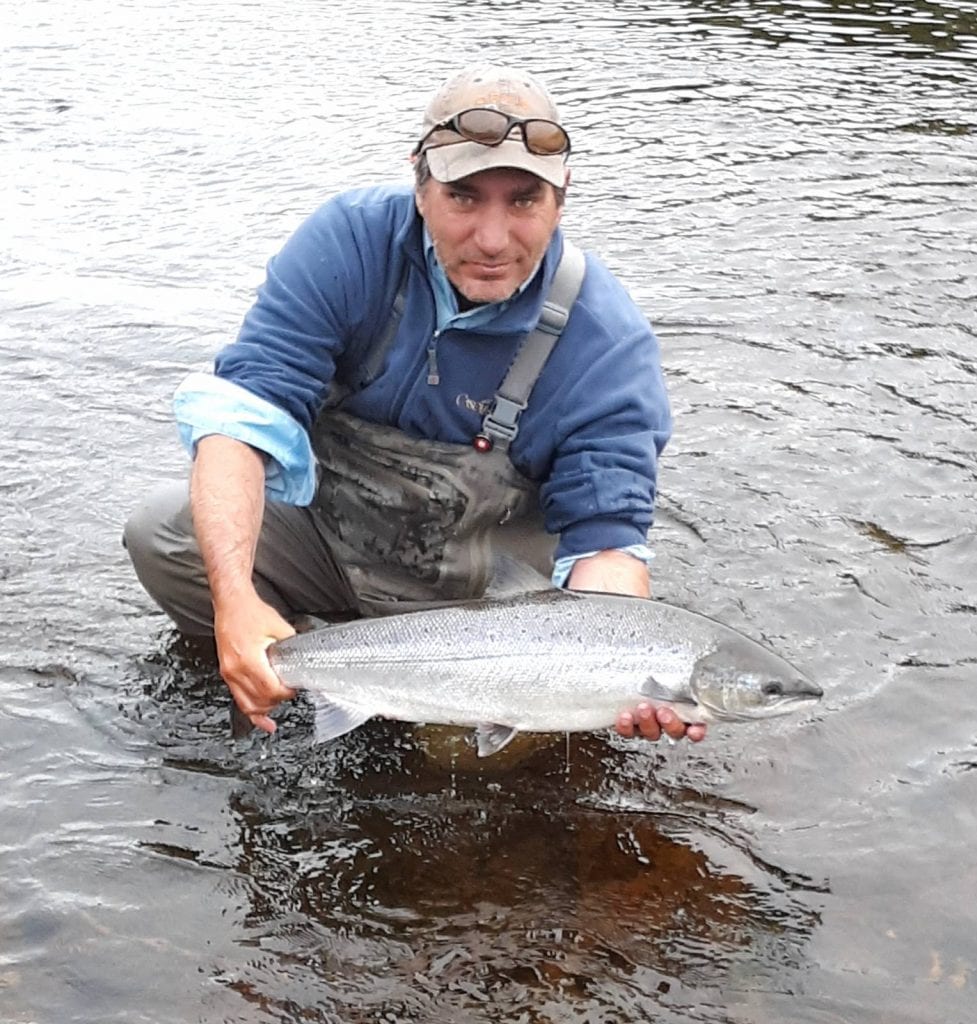Miramichi Final Salmon Counts for 2019
Miramichi Atlantic Salmon Run Final Counts for 2019
The final numbers for the DFO salmon counting traps used to estimate the number of fish returning to the Miramichi each year are in for the 2019 season. These numbers are available at this link https://inter-j01.dfo-mpo.gc.ca/asir/report/count in case you want to study them for yourself. The trap numbers are posted for the fifteenth and last day of each month June through October. You can select from salmon or grilse, and select the date that you want with the controls near the top of the page. The count is cumulative, so by looking at two different dates you can see how many fish came in between any two points in time.
For those who want to go right to the bottom line, the short version is that the runs of both grilse and salmon were very poor, equaling or surpassing the lowest ever recorded on the river. There is no way to sugar coat this, nor is it productive to deny the reality, but there are some details that may mitigate the hard numbers to some degree. Let’s first review the salmon run as it unfolded in 2019.
Early Going and Mid-summer
June fishing on the Southwest Miramichi was quite good in 2019. We didn’t start catching salmon quite as early as normal, not landing our first fish until the 24th. But the fish were going by. We saw them, and just a few miles away in Upper Blackville Country Haven’s sports were having their best June in recent years. It isn’t unusual in some Junes for the fish to just barrel through the lower reaches of the river. Some do pause or even hold for a while, though, and a “choke point” with the right depth and flow can produce good fishing. On the evening of July 1 I hooked 4 nice salmon in the course of a little over an hour. I’m going to hold onto that memory for a while to come.
By the time that the July 15 numbers appeared most people were optimistic about the summer run. On the Southwest Miramichi salmon numbers stood at 74, up from 71 in 2018. These were not great numbers by historic standards, but they were at least stable with other recent years that turned out ok in the end. Things were not quite as good on the Northwest with the salmon counts down about 20% from 2018. Most of the optimism, though, was about grilse and not salmon. The Southwest was up on the previous year’s grilse count by more than 100% – from 128 in 2018 to 273 in 2019. The Cassillis net on the Northwest was also up, though not as robustly as on the Southwest. Remember that the efficiency of these traps is in the single digits, so these are by no means the actual number of fish migrating into the river.
Upriver this manifested itself as some very good fishing. Wayne O’Donnell, manager of the Rocky Brook camp, well upriver of Boiestown, told me that even though they were a little low on anglers this summer their catch was up substantially over 2018. Dan Cain of Fredericton reported that he fished Clearwater Brook – not far upriver from Rocky Brook – and there were lots of fish present there also. Through the middle of July, at the barrier well up on the Dungarvon, both salmon and grilse counts were ahead of 2018, though still off the 2000 to 2010 average pace by 35% to 40%. Meanwhile, downriver the water temperatures climbed in July and the warm water protocols closed the major, brook-fed holding pools. Runs of new fish entering the river came to a near standstill. Between July 15 and September 1 during 2018 – also a very poor year between those dates – about 100 salmon were caught in the Millerton trap. In 2019 that number dropped to only 27. The NW Miramichi numbers were similarly bad. We would have to look to the fall for our salvation as we have been used to doing the last few years.
The Fall Run and Final Numbers
In my last blog I described the fall fishing as we saw it which very much agreed with virtually everyone I know on the river. If you haven’t read that report you can just scroll back after you X out of this blog and check it out. In short, though, there just weren’t a lot of fish around.
The Millerton salmon count on the Southwest went from 101 to 178 between September 1 and October 31. October 31 was the formal last date, though I don’t think the trap was fished nearly that late. That total of 77 salmon, is an average of 1.3 fish per day. Assuming the historic average of catching about 5% of the actual number of fish migrating in to the river, then we are looking at about 26 individual fish a day. In good fall runs just 15 years ago we could easily have seen 2019’s entire fall run in just two or three days!
Looking at the statistics in a relative sense, here are the year-end numbers at Millerton over the last 25 years:
Avg. 1995-2005 Avg. 2006-2015 2016 2017 2018 2019
Salmon 816 667 776 584 670 177
Grilse 2087 1475 1030 997 596 531
That 2019 salmon number is a real shocker, and we can only hope that it will turn out to be an outlier. It is also worth pointing out that the gaspereaux run this year was anecdotally said to be very good, but it was relatively late. According to the MSA’s Mark Hambrook the salmon and grilse will steer well clear of the trap net if it is full of other fish. The gaspereaux run and the height of the salmon and grilse runs were all taking place simultaneously around the first of July. Clearly there was a good push of salmon and grilse that filled the pools at Rocky Brook and Clearwater. But it could be that the July 15 trap numbers were somewhat reduced in 2019 because the traps were heavy with gaspereaux.
Also, due to the big rain on September 7 from hurricane Dorian, the Millerton trap was removed for about a week. There was no such removal in 2018, and that could easily have provided 30 to 50 each additional grilse and salmon – or more. We were fishing hard at that time, and it was the best abundance that we saw all fall. Removing the trap for high water is not at all uncommon; it has happened in many other years too. To be conservative DFO never makes any adjustment to the numbers because of trap removal, so to make one this year would not be appropriate. None-the-less it can skew the numbers a bit when comparing one year to another.
Why are Atlantic salmon numbers declining?
There is a list of problems plaguing Atlantic salmon, and runs on both sides of the Atlantic are down to varying degrees. The furthest northern rivers seem to be the least affected, and so one has to believe that ocean warming is having some effect, perhaps moving prey further north and adding to the salmon’s perilous ocean migrations. The Miramichi, though, has been particularly hard hit, and one has to expect that more localized conditions deserve a lot of the blame. The out of balance population of striped bass has to be a huge factor on that list. It has been clearly shown by the MSA and ASF tagging work that striped bass are eating a considerable percentage of the smolts trying to exit the Miramichi River system during the striped bass spawning time. 2017 was the current peak of striped bass abundance, and that may explain a lot of the drop in grilse in 2018 and 2 MSW salmon in 2019.
Mark Hambrook also voiced concern over grey seals. Growing up boating on Miramichi Bay Mark has a long perspective on the seals, and he says the growth in their numbers is nothing short of amazing. Recently, Canadian DFO officials made a statement that the extent of grey seal predation on Southern Gulf of Saint Lawrence codfish was unsustainable, and that the cod could be extinct in that part of their range by the middle of the 21st century even if there is no commercial fishing for cod allowed, and perhaps even if there is a seal cull! Seals are probably also just as fond of salmon as they are codfish.
What can and is being done?
In Canada First Nations or Aboriginal people have tremendous influence over any Atlantic salmon fishery initiatives that will be authorized by the government. This has been the case for some time, but the First Nations authority has grown by leaps and bounds under the Trudeau administration. Everyone including First Nations is very concerned about the drop in salmon numbers, and they are reportedly taking a fresh look at all of the options. Certainly one of these is the potential of the CAST adult stocking program which we have talked about a lot in past blogs. If this program or something very much like it is embraced by First Nations it is everyone’s opinion that it would be instantly approved by DFO and work could move ahead on it in a big way. We understand that First Nations is planning to call a stakeholder conference for some time this winter at which various options to help the Atlantic salmon population will be discussed. This was done a few years ago by the CAST members, but apparently First Nations feels that it should be looked at again. Hopefully the process will help First Nations decide to support the CAST program.
Meanwhile, though, all is a long way from being lost. There are salmon spawning in all branches of the Miramichi, and while the number of spawning salmon may be less than prior years, it is well known that a higher percentage of the eggs being deposited will eventually swim down the river as smolts than if the river was full of spawning salmon – mitigating to some degree the smaller number of spawners. The available feed and prime habitat for the resulting parr to utilize is greater when there are fewer eggs deposited, and we may very well see larger parr surviving to become smolts, and with less annual in-stream mortality than normal.
MSA biologist Kelsey McGee recently reported that the 2019 smolt count on the Little Southwest Miramichi was estimated at 66K outgoing smolts, and that was right in line with the average dating all the way back to 2005. The Atlantic salmon spawning stock in the LSM was several times larger in the early 2000s than it is now, but the river is still continuing to pour out a large number of smolts. If we can get a break in the conditions that have lowered returns from the ocean we can still have a solid run, and the stock can rebuild very quickly.
Striped Bass
There are some important bits of information worth sharing about striped bass. First, it seems that the First Nations’ harvest really isn’t going all that well. Both this past spring and this fall the catch is said to be far below the quota. Apparently the fishing effort that First Nations is able to put forward just isn’t on the scale required to catch the quota. Personally I can’t understand why the gasperaux netters down in the Bay aren’t given a big slice of this quota. That would solve the problem quickly. It would seem that these commercial fishermen are just as deserving of a crack at the bass as any other Canadian citizens.

Another issue is the terribly restrictive slot limit that recreational anglers have to work with. A more accommodative slot limit or minimum size would allow more people to catch and retain striped bass for food. We’re told that because of a concept called COSEWIC or “Committee On the Status of Endangered Wildlife in Canada” DFO has been extra cautious on expanding the striped bass harvest. Under COSEWIC Miramichi striped bass are officially considered endangered – even though the population stands at levels never before seen by any living person – because it was believed that the striped bass spawn exclusively in the Northwest Miramichi, and that makes the whole population especially vulnerable. Two years ago the Miramichi Salmon Association undertook a program to net larval and young-of-the-year striped bass, and they sampled not only the NW Miramichi, but also the Southwest Miramichi and the Tabusintac Rivers.
You guessed it. Both larval and young of the year striped have been found in all three of these river systems. So it is clear that the NW Miramichi is not the only striped bass spawning river on the Northumberland Shore of New Brunswick. It is very likely that other Northumberland Rivers are also hosting spawning striped bass populations. The government review process is reported to be painfully slow, but eventually this clearly documented information should change the COSEWIC status of stripers away from endangered and allow a more normal harvest of this species.
The post Miramichi Final Salmon Counts for 2019 appeared first on Brad Burns Fishing.
Brad Burns has avidly pursued striped bass, brook trout, Atlantic salmon and a host of other game fish for over 50 years. He is the author of the L.L. Bean Fly Fishing for Striped Bass Handbook, and with John Cole co-authored Fly Fishing for Saltwater’s Finest in addition to this latest book Closing the Season. Brad has also written for many of the best known fly-fishing publications.





What First Nations are unsccessfully trying to harvest bass? I’m from Metepenagiag and no bass wanted here.